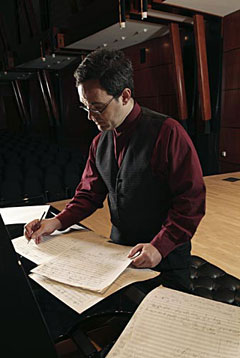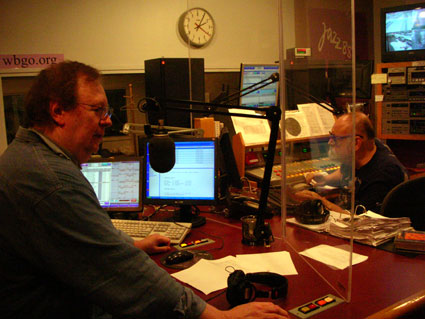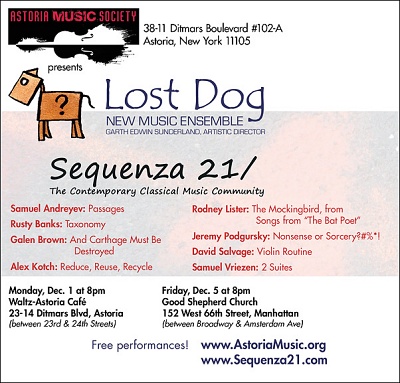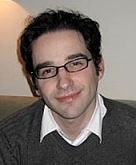 Big Up to our friend and S21 blogger Lawrence Dillon who is one of three winners of the Ravinia Festival of Highland Park, Illinois’ first composer competition. The competition asked composers to submit works for piano trio and narration inspired by the words of Abraham Lincoln, in honor of Lincoln’s bicentennial in 2009.
Big Up to our friend and S21 blogger Lawrence Dillon who is one of three winners of the Ravinia Festival of Highland Park, Illinois’ first composer competition. The competition asked composers to submit works for piano trio and narration inspired by the words of Abraham Lincoln, in honor of Lincoln’s bicentennial in 2009.
Lawrence’s composition, The Better Angels of Our Nature, uses excerpts from two letters and two speeches that focus on three key aspects of Lincoln’s character: his integrity, his sense of humor, and his poetic vision. The first movement, Integrity, uses a letter the future president wrote in 1836, chiding a friend for announcing publicly that he was in possession of facts that he would not divulge because they would destroy Lincoln’s prospects for re-election to the Illinois state legislature.
The second movement, Humor, uses an equally remarkable letter, one written by the young Lincoln on April Fools Day, 1838, to his friend Mrs. O. H. Browning. In it, he spins a fantastic and humorous yarn about his failed courtship attempts to a woman he found less than attractive.
The final movement, Vision, uses excerpts from two of Lincoln’s inspiring speeches to show the poetic side of Lincoln’s character. You can read more about the letters at Lawrence’s S21 blog.
The other two winners of the Ravinia competition are James Crowley’s From the Earth and Eric Sawyer’s Lincoln’s Two Americas. All three composers will receive monetary awards, and all three works will be premiered by the Lincoln Trio, ensemble in residence at the Music Institute of Chicago. Performances will take place throughout the 2009 Lincoln bicentennial year. One of the three works will then be selected for an East Coast tour with Miriam Fried and musicians from Ravinia’s Steans Institute.
 n this age of Dobbsian-fueled immigration hysteria, what could be more timely than an opera about a beautiful Mexican drug smuggler who kills her lover after he betrays her and, in the process, becomes a folk heroine.
n this age of Dobbsian-fueled immigration hysteria, what could be more timely than an opera about a beautiful Mexican drug smuggler who kills her lover after he betrays her and, in the process, becomes a folk heroine.

 Bard SummerScape is presenting the
Bard SummerScape is presenting the 
 Big Up to our friend and S21 blogger Lawrence Dillon who is one of three winners of the Ravinia Festival of Highland Park, Illinois’ first composer competition. The competition asked composers to submit works for piano trio and narration inspired by the words of Abraham Lincoln, in honor of Lincoln’s bicentennial in 2009.
Big Up to our friend and S21 blogger Lawrence Dillon who is one of three winners of the Ravinia Festival of Highland Park, Illinois’ first composer competition. The competition asked composers to submit works for piano trio and narration inspired by the words of Abraham Lincoln, in honor of Lincoln’s bicentennial in 2009. Harris
Harris